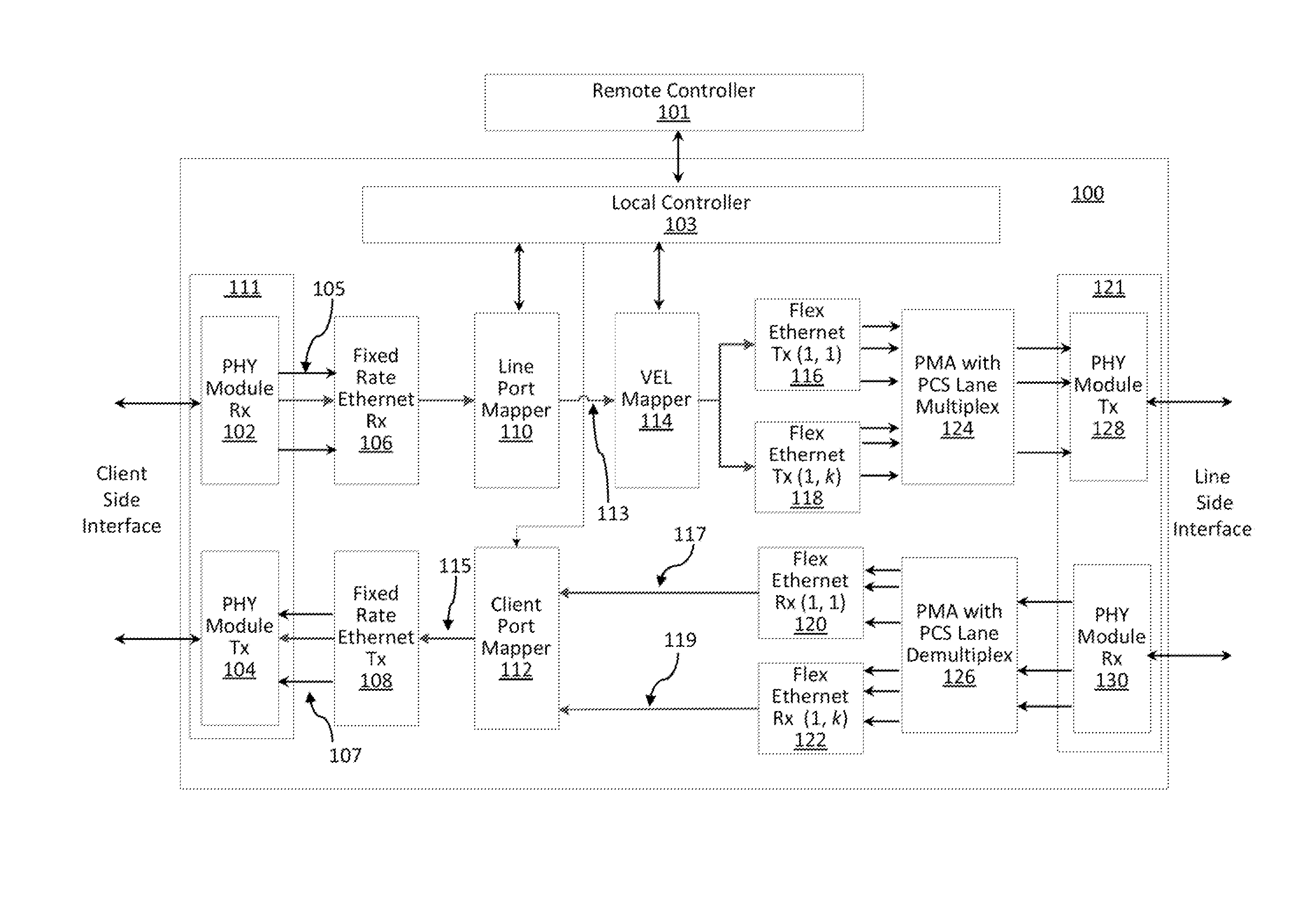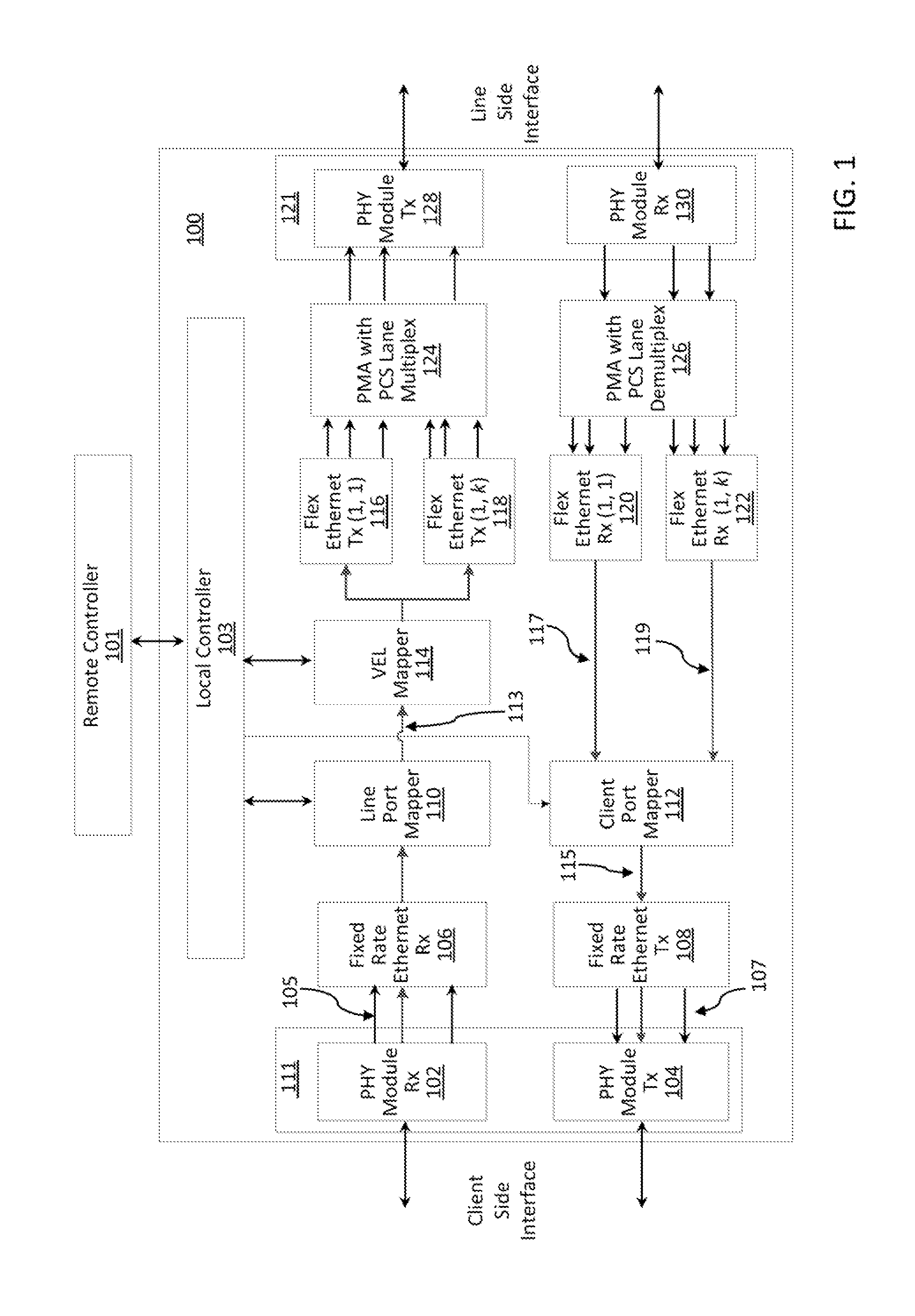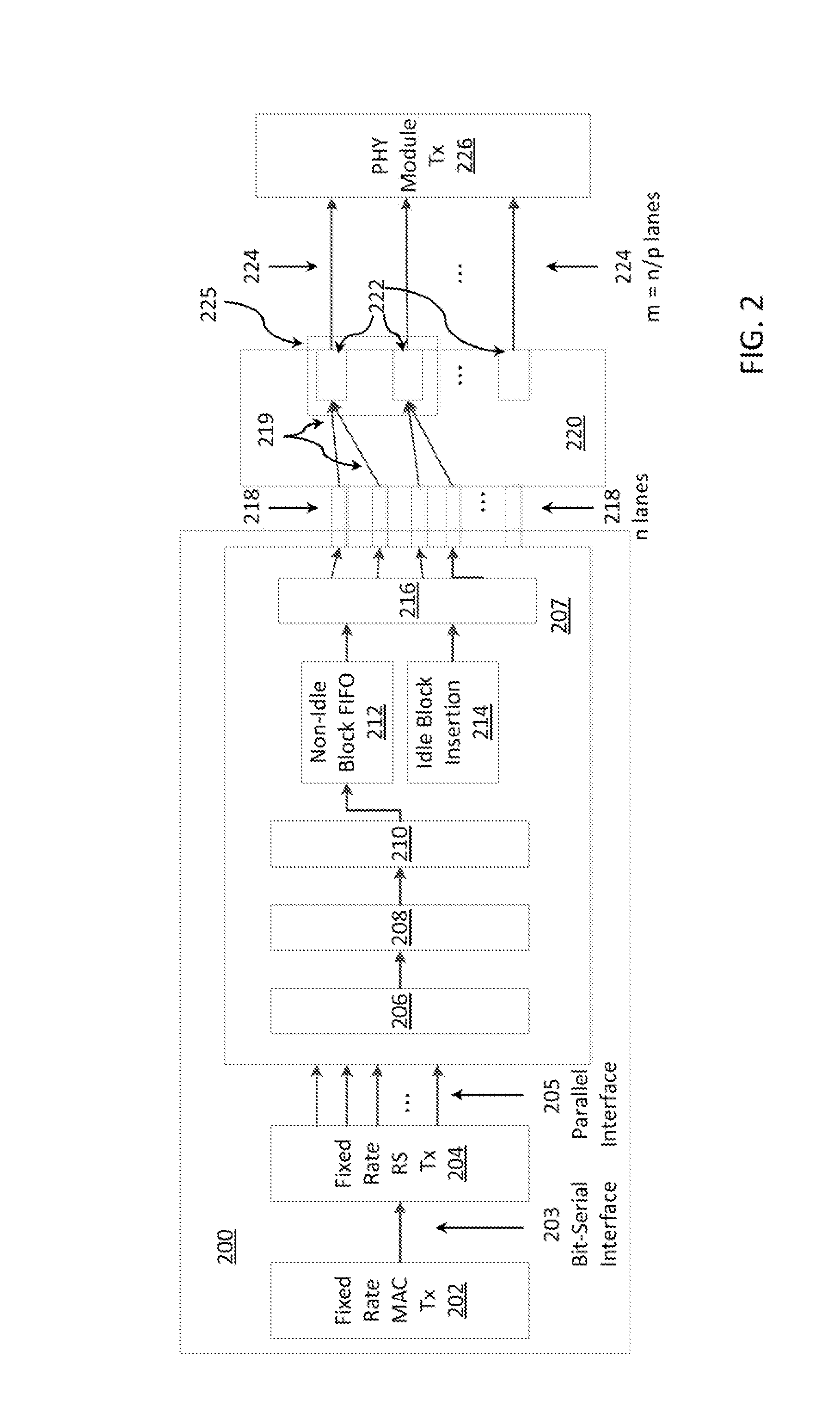Reconfigurable and variable-rate shared multi-transponder architecture for flexible ethernet-based optical networks
a multi-transponder architecture and flexible technology, applied in data switching networks, multiplex communication, high-level techniques, etc., can solve the problems of unnecessarily consuming energy for the electronic circuitry implementing the protocol and the accompanying transceiver modules, and worsening the effect of inefficiency
- Summary
- Abstract
- Description
- Claims
- Application Information
AI Technical Summary
Benefits of technology
Problems solved by technology
Method used
Image
Examples
Embodiment Construction
[0021]The system and method according to the present principles may employ a novel Flexible Ethernet (Flex-Ethernet) mechanism which, in one embodiment, may build upon the standardized 802.3ba protocol, and may enable operation at any rate, and also may enable sharing of a single optical transceiver module among Virtual Ethernet Links (VELs) in the optical domain. The system and method may be applied in the context of a novel Ethernet transponder architecture according to the present principles, which may include multiple client side and line side interfaces.
[0022]For interoperability purposes, the transponder can operate with clients equipped with standard Ethernet interfaces. The transponder may be centrally controlled in a Software Defined Networking (SDN) manner, so that end-to-end virtual VELs with the desired rates can be established according to the needs of the network operator. The system and method according to the present principles thus may create VELs which can transpar...
PUM
 Login to View More
Login to View More Abstract
Description
Claims
Application Information
 Login to View More
Login to View More - R&D
- Intellectual Property
- Life Sciences
- Materials
- Tech Scout
- Unparalleled Data Quality
- Higher Quality Content
- 60% Fewer Hallucinations
Browse by: Latest US Patents, China's latest patents, Technical Efficacy Thesaurus, Application Domain, Technology Topic, Popular Technical Reports.
© 2025 PatSnap. All rights reserved.Legal|Privacy policy|Modern Slavery Act Transparency Statement|Sitemap|About US| Contact US: help@patsnap.com



